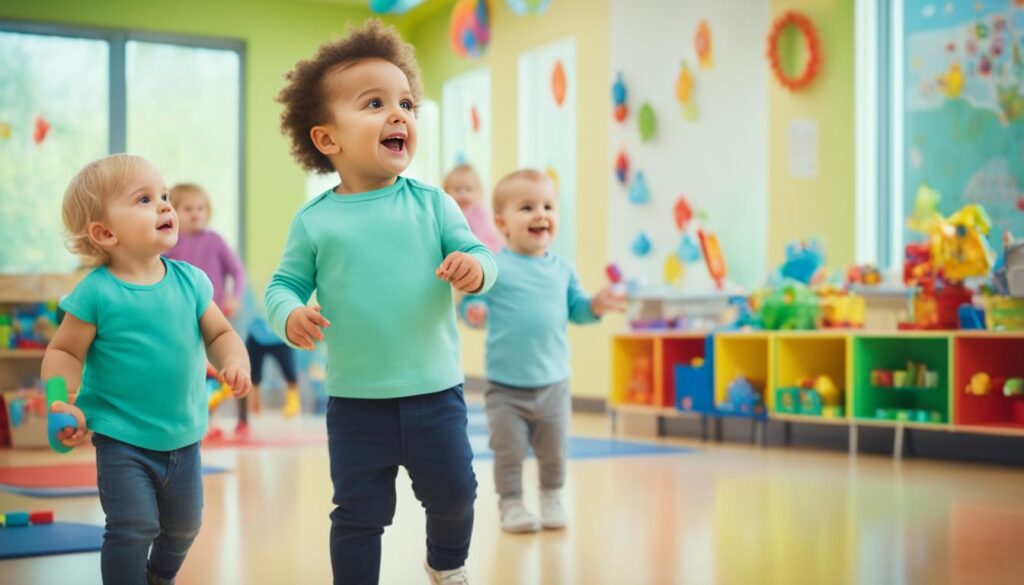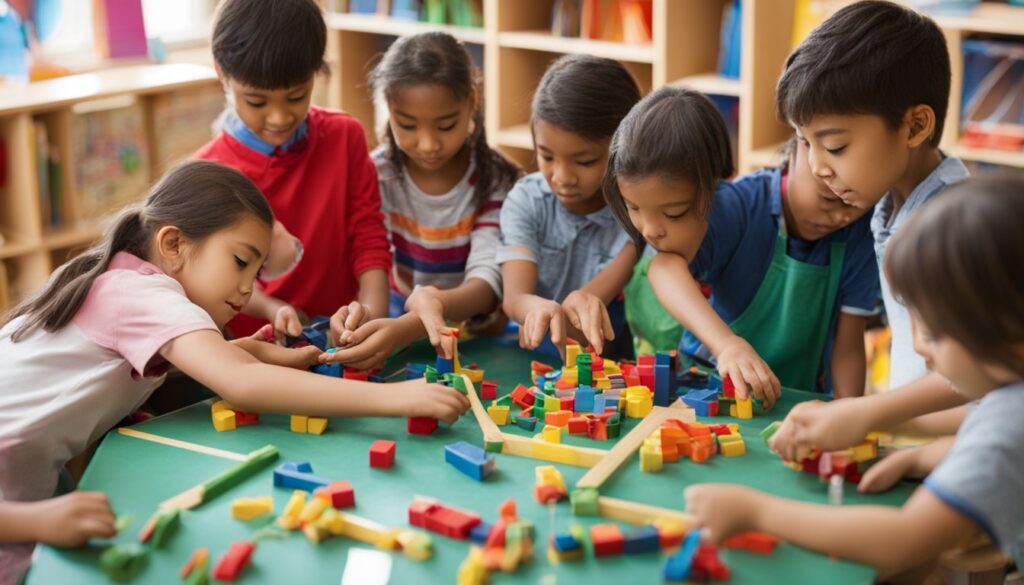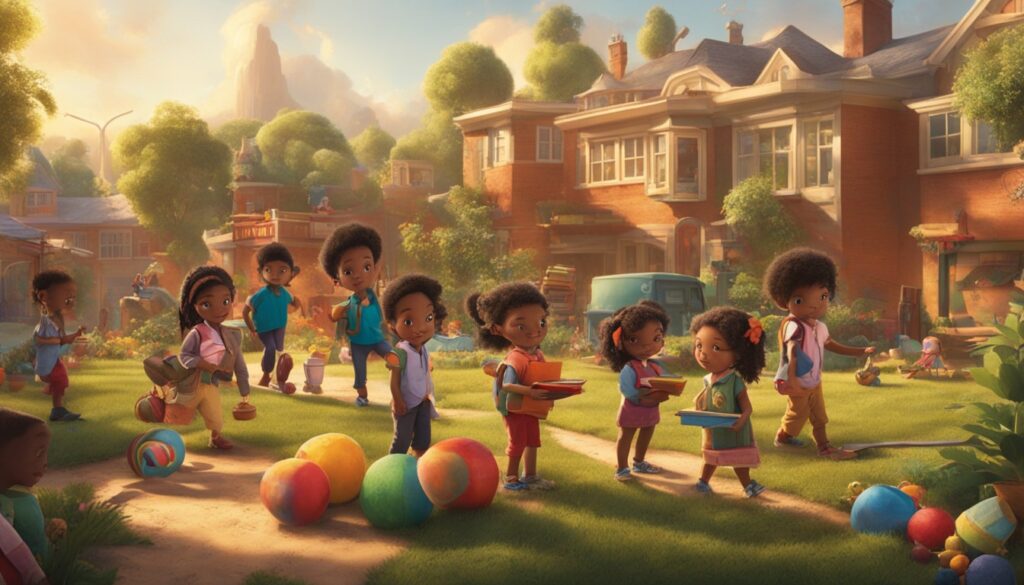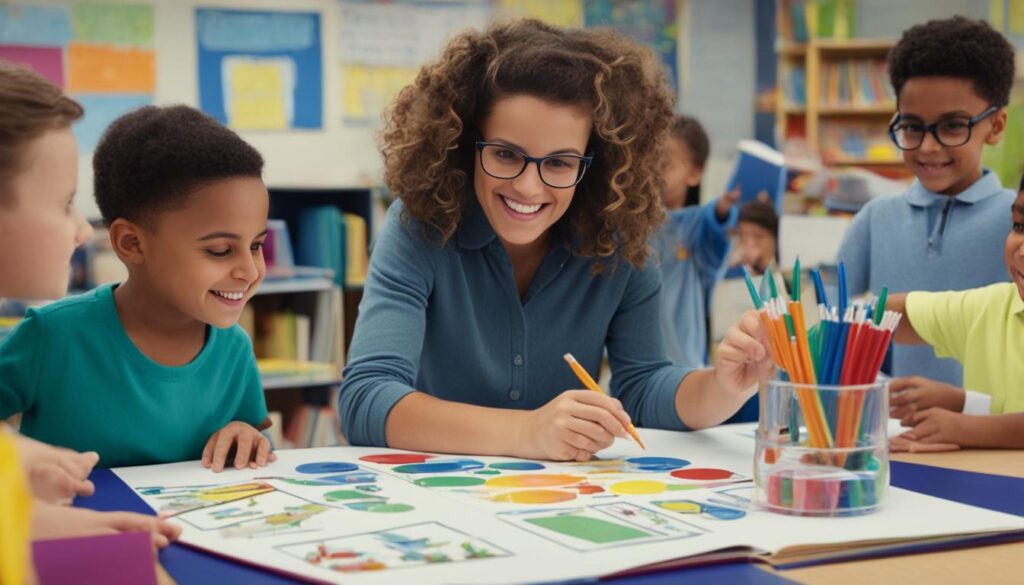No Such Thing as a Perfect Kindergarten: Here’s Why
Did you know there are over 33,000 kindergartens in the United States? With so many choices and the importance of early education, you’d think finding the perfect kindergarten would be easy. But finding a perfect kindergarten is impossible, like searching for a unicorn. The real goal is to find a good fit from the many options. This ensures it meets the child’s needs and the family’s educational values.
The idea of a perfect kindergarten hides the truth that each child is unique. They bring their own needs to the classroom, including different cultures and ways of learning. How can parents cut through the complex educational terms and marketing? It’s not about finding perfection. It’s about understanding and celebrating the variety of kindergarten choices available.

Key Takeaways
- There is no one-size-fits-all “perfect kindergarten” due to the unique needs of every child.
- Early education should be tailored, taking into account a child’s individual development.
- Cultural diversity significantly influences learning approaches in kindergarten.
- Finding the right fit for a child’s education is more realistic and beneficial than seeking perfection.
- The variety of kindergarten choices offer opportunities to match educational needs with suitable programs.
- The perfect kindergarten myth should be replaced with a more personalized approach to early childhood education.
Understanding Individuality in Early Education
In early education, recognizing each child’s individuality is key. This idea highlights the different unique developmental pathways children take. These paths are influenced by family, community, and cultural diversity in learning. In kindergarten, it’s clear that personalized learning approaches are essential. They respect each child’s unique qualities and developmental needs.
Embracing Children’s Unique Developmental Pathways
Kids are not blank slates. They have their own skills, passions, and tendencies. That’s why learning environments need to fit their unique developmental pathways. Personalized learning experiences match children’s natural interests. They also build on their strengths and help overcome challenges.
Impact of Cultural Diversity on Learning Approaches
Cultural diversity in learning greatly shapes how kids see and interact with the world. Learning approaches that honor cultural backgrounds make kids feel valued and boost their confidence. This motivates them to engage more with their learning. By considering students’ cultural perspectives, teachers can create inclusive and representative educational methods.
Why One Size Does Not Fit All in Kindergarten Settings
The idea that the same learning method works for every student is outdated. Such standard teaching can limit kids’ creativity and growth. Instead, personalized learning approaches focus on individual needs, pace, and style. This approach leads to more enthusiastic and fulfilled students.
| Aspects | Traditional Approach | Personalized Approach |
|---|---|---|
| Learning Pace | Uniform for all students | Adjusted to student’s individual needs |
| Curriculum Content | Standardized for all | Tailored to include cultural and personal relevance |
| Assessment Method | Generic tests and benchmarks | Flexible and aligned with student’s learning path |
| Teacher’s Role | Conveyor of information | Facilitator and guide for individual progress |
| Student Engagement | Passive absorption | Active participation and exploration |
The Role of Play in Kindergarten
In kindergarten, play is more than just fun. It’s a key part of creativity and problem-solving. These elements are central to play-based learning. Playing is not just something to pass the time. It fosters a love for learning in kids.
Using benefits of play-based learning makes school exciting for kids. They see learning and fun as one thing. Kids love this mix, which shows in their happy faces.
Play in kindergarten is the gateway through which children grasp complex concepts intuitively, making connections that textbooks alone cannot forge.

Combining a structured curriculum with play is crucial. It creates a perfect setting for kids’ growth. Here’s a look at how play shapes learning in different areas:
| Play-Based Activities | Learning Areas | Skills Enhanced |
|---|---|---|
| Building Blocks | Mathematics and Physics | Counting, Geometry, Balance |
| Storytelling Circles | Literacy and Language | Vocabulary, Listening, Communication |
| Role-Play Stations | Social Studies and Ethics | Empathy, Sharing, Cultural Awareness |
| Art and Craft | Creativity and Expression | Artistry, Imagination, Fine Motor Skills |
| Puzzles and Logic Games | Critical Thinking and Problem-Solving | Strategy, Patience, Cognitive Development |
We know play is key in early education. That’s why we value every moment of it. As teachers and parents, we must support kids’ natural need to explore. We should let their curiosity grow through playing.
Social and Emotional Learning in Kindergarten
Kindergarten is not just about learning letters and numbers. It’s also about helping kids grow socially and emotionally. We start teaching social skills and emotional intelligence. These skills are vital for success in and out of the classroom.
Building Social Skills and Emotional Intelligence
Kindergartens are key in helping kids learn to get along with others. They introduce group play, how to solve conflicts, and ways to talk about feelings. Kids learn to express themselves, see things from others’ viewpoints, and bounce back from setbacks.
Creating Supportive Kindergarten Communities
In a caring kindergarten, kids feel safe, listened to, and important. Teachers and parents create places where being kind and respecting each other is normal. This helps children make friendships based on trust and respect.
| Social Skills in Kindergarten | Emotional Intelligence Development |
|---|---|
| Cooperative play & team projects | Identifying & discussing emotions |
| Turn-taking & sharing exercises | Empathy building through storytelling |
| Problem-solving with peers | Learning coping strategies for frustration |
| Effective communication activities | Cultivating emotional regulation |
Family Involvement: A Pillar of Kindergarten Success
Family involvement is key to a great kindergarten experience. Parents and guardians playing an active role in education helps create a strong positive learning environment. When families work closely with teachers, it supports kids’ learning and growth, making everyone’s well-being a shared goal.
Studies show that kids do better when their families are involved. They get better grades, behave better, and have better social skills. Good communication between home and school makes kids more confident. It also strengthens the bond between families and schools, making a supportive learning community.
“When schools, families, and community groups work together to support learning, children tend to do better in school, stay in school longer, and like school more.” – National PTA
Knowing how crucial family roles are in education makes it important to get families involved. Here are some ways to foster strong family engagement:

- Organize interactive kindergarten events that welcome family participation.
- Develop frequent and transparent communication using newsletters, emails, or digital platforms.
- Construct avenues for volunteering in classrooms that accommodate varying schedules.
- Provide educational workshops that equip families with tools to support learning at home.
These actions encourage a two-way involvement in education. To see how well they work, we can look at success indicators like:
| Engagement Indicator | Impact Measurement |
|---|---|
| Attendance at parent-teacher conferences | Increased investment in student progress |
| Participation in school events | Enhanced community ties and support networks |
| Volunteer hours by family members | Direct contribution to classroom resources and student experiences |
| Workshop attendance | Cultivation of parental skills and educational reinforcement at home |
It’s clear: families and schools working together boosts educational success. A partnership between educators and families creates a positive place for kids to learn and grow. This teamwork is essential for the overall success of kindergarten students.
There Is No Such Thing as a Perfect Kindergarten
The search for the ideal learning environment leads many on a quest for the perfect kindergarten myth. This idea makes us dream of flawless classrooms and teaching strategies that work for all. Yet, the truth shows us a different scene. It highlights the diverse needs of students and the complex demands of education. This proves that a one-size-fits-all approach is unrealistic and restrictive.

Challenging the Myth of a One-Size-Fits-All Education
Challenging one-size-fits-all education is crucial. It helps us recognize and value every child’s unique journey in learning. This approach encourages adapting teaching methods to fit various abilities, interests, and backgrounds. Teachers need to be flexible in their approach. They should make sure each child’s academic and emotional needs are met.
Recognizing the Limitations of a “Perfect” Learning Environment
We must acknowledge the limitations of a perfect learning environment. Educators should always look to refine their teaching methods. They should shift from seeking an ideal image of kindergarten to embracing a dynamic, inclusive education model. Accepting these limits isn’t about admitting defeat. Instead, it’s about committing to improve and achieve excellence in teaching.
| Myth | Reality |
|---|---|
| Uniform learning benefits all children. | Children have individual learning styles that require diverse approaches. |
| Academic excellence is the sole marker of success. | Social, emotional, and creative developments are crucial for well-rounded growth. |
| A perfect curriculum exists that suits every student. | Curricula have to be adaptable to meet different needs and backgrounds. |
To sum up, achieving greatness in kindergarten education is an ongoing journey of adaptation and personalized care. Moving beyond the ideal classroom notion, we pave the way for a better, inclusive educational world. This world celebrates and supports every child’s growth.
The Evolution of Kindergarten Education Models
The way we teach young kids in kindergarten is always changing. Educators are dedicated to meeting the needs of these young learners. In the past, kindergarten was very strict and focused on a set curriculum. But now, we’re seeing innovative approaches that change how we teach. These new methods are based on research and practice. They focus on being flexible and meeting kids where they are in their learning.
Nowadays, kindergarten teaching is guided by the latest research in early education. This research tells teachers to look at learning as a whole. It mixes academic, emotional, and social growth. Innovators in education are creating new ways to teach. These include learning through play, using technology, and plans that meet each child’s needs. These methods help kids learn important life skills. Skills like how to adapt, be creative, and work together.
The way we think about kindergarten is always getting better. This is because of new research and techniques in teaching. Educators and policy-makers work together to make learning better for all kids. They aim to make the early years of school rich, welcoming, and modern. Their hard work in innovative approaches and using the latest research will shape learning for future students.






